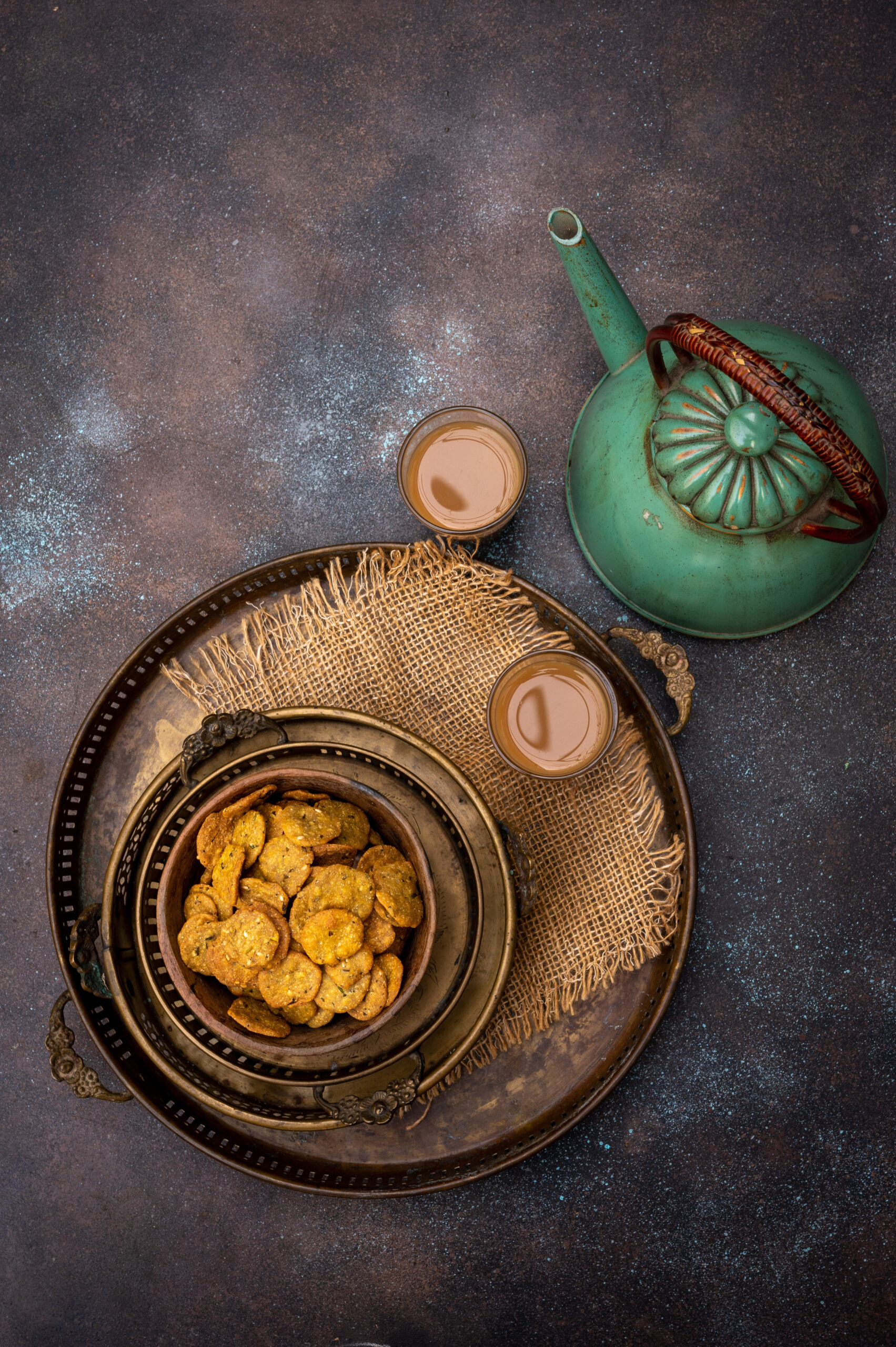Bajra ni puri is a traditional Gujarati snack that is mostly eaten in the monsoons or when the climate is cooler. This is because bajra is heavy to digest, as I have shared in prior recipes that feature it, and also to coincide with the winter harvest of this particular millet. I often talk about how Nature tells us what we should be eating, and how and when; it was a wonderful science indeed that our ancestors followed. However, if consumed in moderation, bajra ni puri can of course be eaten year-round. Since this is the last stage before the summer heat sets in, and hence our last chance for a few months to gorge on this dish as per traditional logic, I thought it was the perfect time to share it.
Bajra, also known as pearl millet, is a millet rich in iron. You can infer this because of its darker colour, as I learned while studying Macrobiotics some years ago. Speaking of seasonal consumption, lighter grains are usually had in the summer. Funnily enough, cravings for heavy food are not often there in the hot season anyway. Our bodies naturally adapt to Nature, and we should become more conscious of these needs and put them first.
There are different methods of making bajra ni puri. I like this one as it has a bit of tanginess, created by the yoghurt that is added to it. It is also spiced up by ginger-green chilli paste.
My mother used to make the puris a bit bigger, and they would be fluffy – soft in the centre and crisp on the edges. My sister makes it this way too, and I love hers perhaps because it reminds me of our mother’s.
My version is a small and crispy one, which goes well with masala chai. To create this perfect pairing, you can check out my recipes both for the masala and the chai itself.
When my daughter who is away studying came home recently, she took back with her the entire batch of bajra ni puri that I had made then. She loved it that much. So even though my own favourite version is what my sister learned from my mother (which she must have learned from her own mother), my daughter’s is probably mine. I am happy to share with her not just this snack but also the traditions that come with it.
What I am reminded of in some way is of how when a Gujarati bride gets married and leaves her home, she is given a pot full of goodies to take back with her. My understanding is that she would need the sustenance as she left her village and crossed into her new one, be it by road or by train, and items that would provide energy (like millets) would be included. Today, the tradition is continued in the form of fancy silver trays laden with sweets and nuts.
My mother must have brought with her the pot that is now an heirloom of mine when she got married. It was the only thing that I asked from her before she passed on. It is a beautiful round brass pot with a small mouth and a small lid; I imagine this was to ensure that only a little air got in and the items within remained fresh. It adorns my kitchen, and maybe I’ll share a photo of it in future.

Bajra Ni Puri
(Yield: 40 tiny pieces)
¾ cup bajra flour
¼ cup wholewheat flour
2½ tablespoons curd (use lime juice – optional)
2 tablespoons oil
Salt to taste
1 teaspoon sesame seeds
¼ teaspoon asafoetida
½ teaspoon turmeric
2 teaspoons green chilli+ginger paste
½ cup finely chopped fresh methi leaves (optional)
2 tablespoons water (optional)
In a bowl, add the flours, salt, turmeric, asafoetida, curd, oil, sesame and green chili-ginger paste. Mix, then add the methi (fenugreek) leaves if you wish to. Now, gauging the quantity of water required, add it slowly – 1 tablespoon at a time – making sure the dough is thick.
In the mean time, heat the oil for deep frying. Once it has heated, gently add a few puris at a time and lower the flame. Turn them over frequently so that both sides cook well and become a golden colour. Fry on a low to medium flame.
Remove and drain on a paper. Once cooled, store in an airtight container. Enjoy with your chai. You’ll find it tangy, spicy and yummy.
I love how this bajra ni puri contains the significance of my mother’s wedding pot, and also the simplicity of an afternoon snack.




